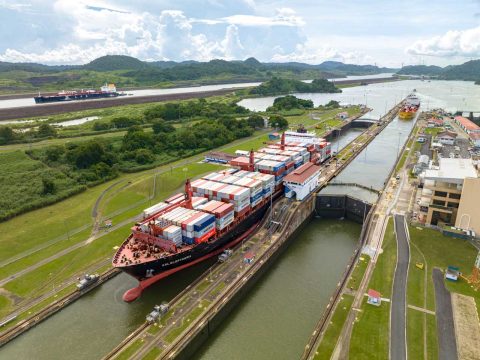
Maintenance causes temporary transit reduction at Panama Canal
Scheduled maintenance work at the Gatun Locks of the Panama Canal will cause a temporary reduction in daily transit numbers, the Panama Canal Authority said. The maintenance is part of measures taken by the authority to optimise transit operations while ensuring safe navigation through the waterway.
The maintenance works will be carried out from May 7 to May 15. As a result, a temporary reduction of daily transits from 20 to 17 vessels at the Panamax locks is required.
However, once the maintenance works are done, the authority said it will implement significant increases in transit capacity thereafter, raising the total number of daily transits from 24 to 32. Effective May 16 through May 31, the number of daily transits through the Panamax locks will rise from 17 to 24. Starting June 1, the number of daily transits through the Neopanamax locks will increase from 7 to 8.
In addition to these adjustments, the maximum permitted draft for vessels transiting the Neopanamax locks will be raised to 13.71 meters (45 feet) from June 15 onwards, up from the current limit of 13.41 meters (44 feet). This adjustment in draft allowance is informed by careful analysis of water availability and takes into account projections for Gatun Lake levels, ensuring optimal conditions for navigation, the authority said in its notice.
Commenting on the recent transit figures through the Panama Canal, Simon Heaney, senior manager, container research at Drewry, said that recent increases in transit slots are all for the Panamax locks and are of less benefit to containerships as roughly two-thirds of the sector’s transits are made via the larger Neopanamax locks.
Liner carriers pushing out other sectors
Since the transit restrictions started last year, liner carriers have been taking a much bigger slice of a smaller cake. As other shipping sectors have become less frequent users of the Panama Canal, containerships’ share of total transits has increased dramatically, Heaney points out.
In the first six months of the Panama Canal Authority’s fiscal year 2024, containerships accounted for 15.7 per cent of all Panamax transits (9.9 per cent in the entirety of FY 2023), 61.4 per cent of all Neopanamax journeys (48.3 per cent in FY23), and 28.9 per cent of total transits (19.9 per cent in FY23).
“Assuming that transit restrictions are gradually lifted as planned, we can expect to see other sectors make greater use of the canal and for containerships’ share to fall back towards more historical levels,” Heaney said.
While containerships’ overall share of transits might be about to come down, the lifting of restrictions will enable more daily transits. Greater access is welcome for an industry having to contend with the Suez Canal situation.
You just read one of our premium articles free of charge
Register now to keep reading premium articles.




